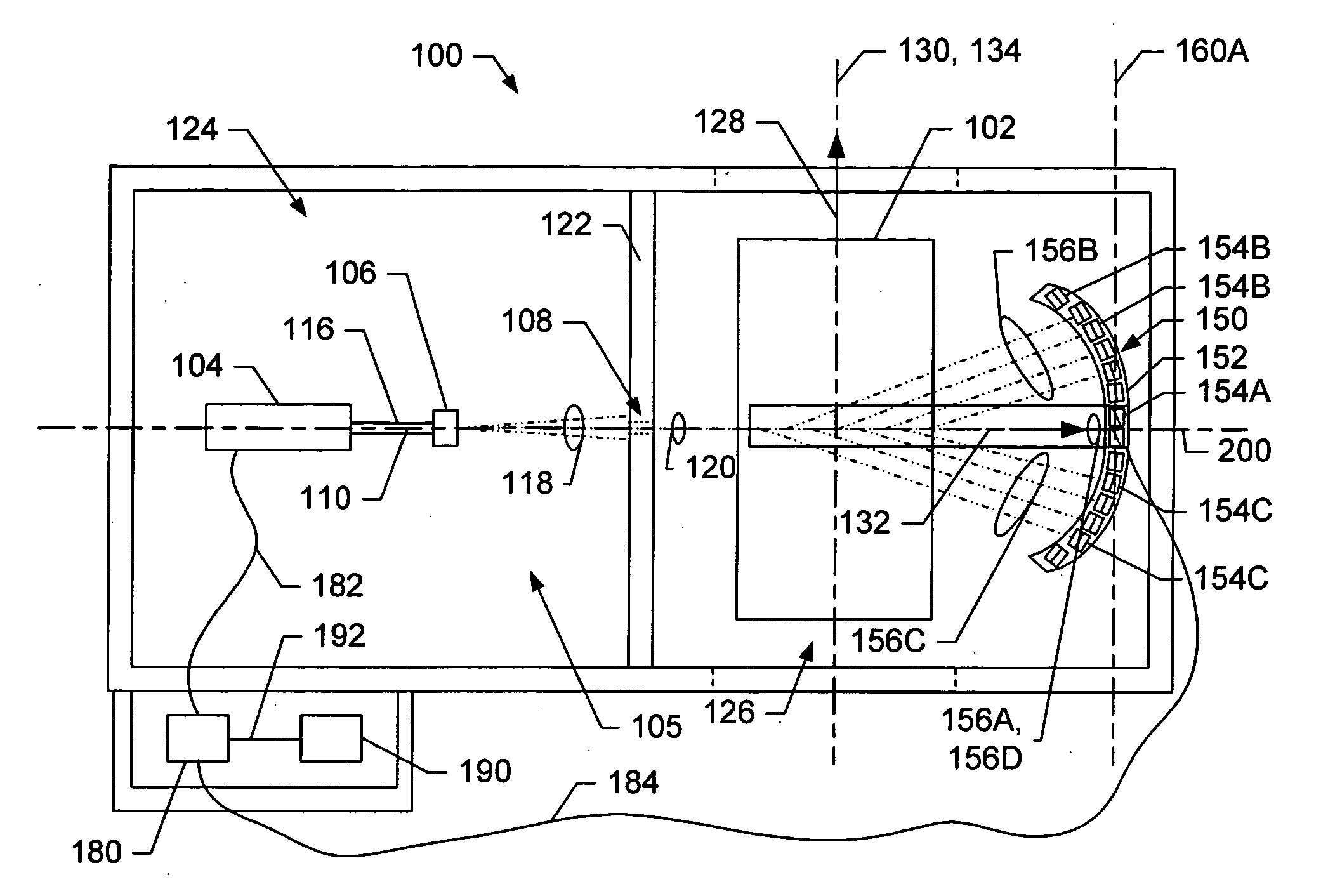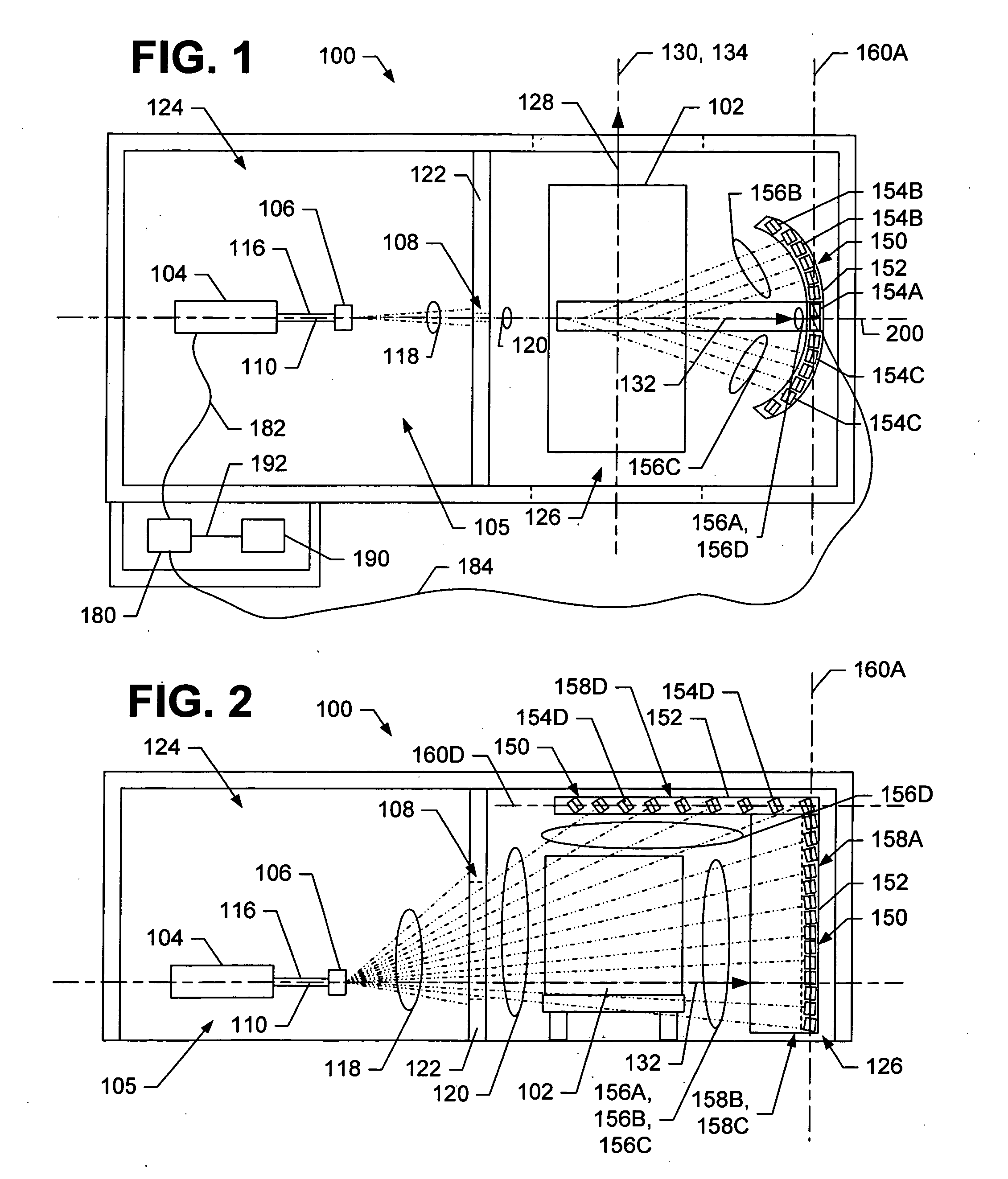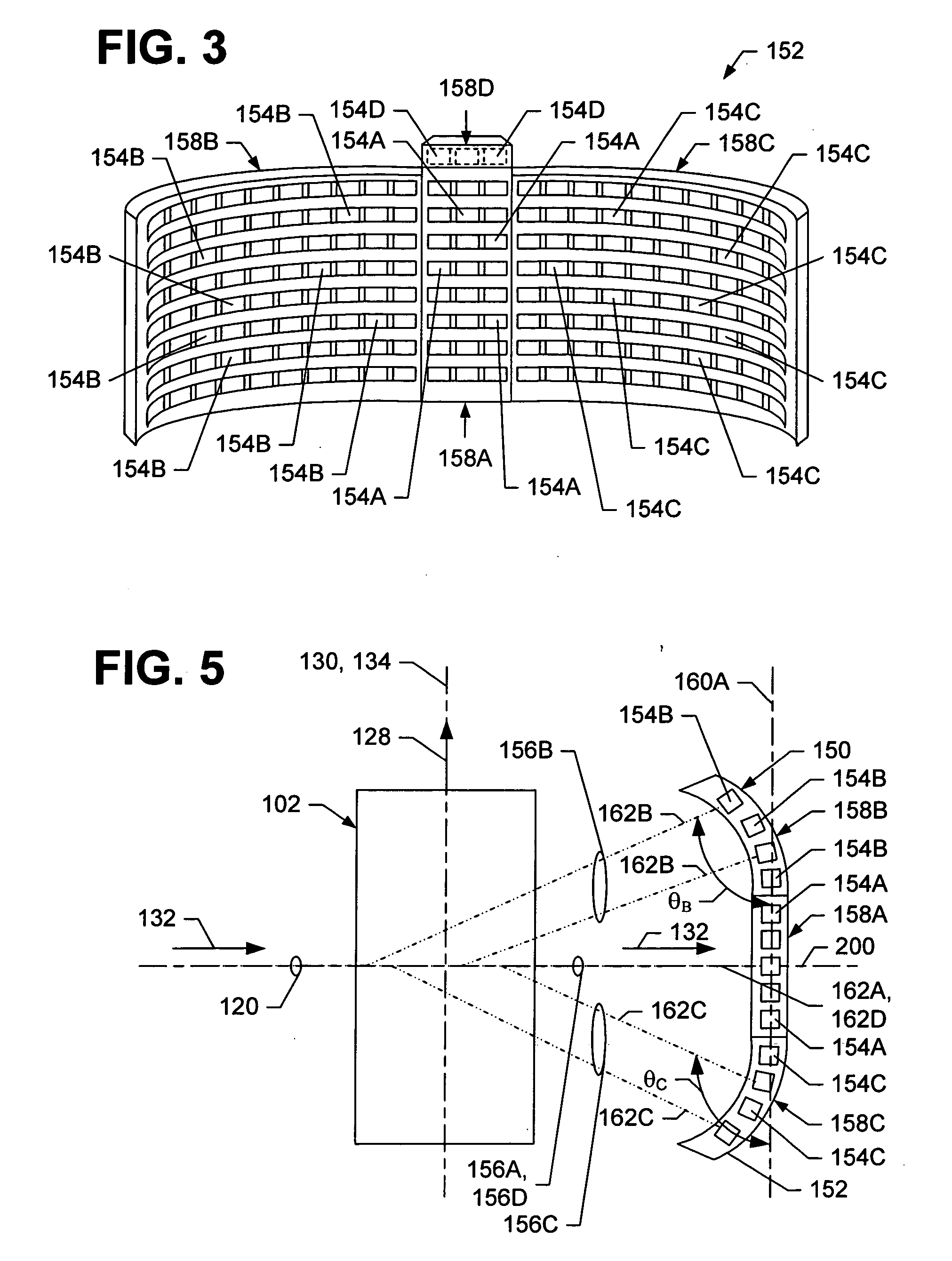Non-intrusive container inspection system using forward-scattered radiation
a container inspection and forward-scattered radiation technology, applied in the direction of material analysis, material analysis using wave/particle radiation, instruments, etc., can solve the problems of inconvenient inspection of a large percentage of containers entering the country, inconvenient inspection, and high labor intensity of personnel, so as to improve the multi-plane image of the contents of the container, the effect of accurate identification and discrimination of materials
- Summary
- Abstract
- Description
- Claims
- Application Information
AI Technical Summary
Benefits of technology
Problems solved by technology
Method used
Image
Examples
Embodiment Construction
[0022] Referring now to the drawings in which like numerals represent like elements or steps throughout the several views, FIG. 1 displays a top plan, schematic view of a non-intrusive container inspection system 100, according to a first exemplary embodiment of the present invention, for inspecting the contents of, or items present in, a container 102 used to transport goods or other articles. The non-intrusive container inspection system 100 comprises a charged particle accelerator 104 (sometimes also referred to herein as “accelerator 104”), a conversion target 106, and a collimator 108 that in combination form an accelerator subsystem 105. The charged particle accelerator 104, in the first exemplary embodiment, comprises a pulse-type, multi-energy, linear electron accelerator that is operable to continuously produce, or emit, a pulsed beam of accelerated electrons 110 including a first plurality of pulses of accelerated electrons 112 having a first energy level and a second plur...
PUM
 Login to View More
Login to View More Abstract
Description
Claims
Application Information
 Login to View More
Login to View More - R&D
- Intellectual Property
- Life Sciences
- Materials
- Tech Scout
- Unparalleled Data Quality
- Higher Quality Content
- 60% Fewer Hallucinations
Browse by: Latest US Patents, China's latest patents, Technical Efficacy Thesaurus, Application Domain, Technology Topic, Popular Technical Reports.
© 2025 PatSnap. All rights reserved.Legal|Privacy policy|Modern Slavery Act Transparency Statement|Sitemap|About US| Contact US: help@patsnap.com



